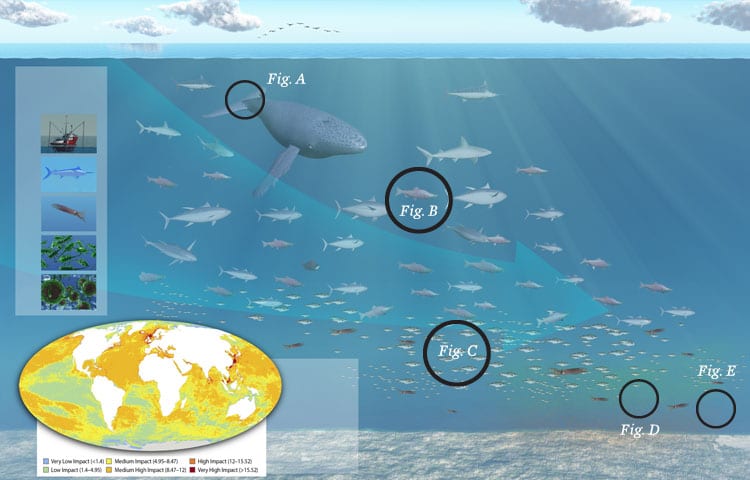Infographic: Fishing Down the Food Chain
Overfishing alters ocean ecosystems, leading to fewer and smaller fish over time. Historically people have often targeted the largest fish for food, like tuna, cod, and salmon. Once overfishing begins, fishermen must spend more time and resources searching for the same fish as they become scarcer, using increasingly powerful technology to find the last hidden fish.

If overfishing isn’t stopped, these fish eventually run out and overfishing expands to previously untargeted, usually smaller species, some of which were considered undesirable. As a result, the world catch is now primarily made up of small fish like pollock rather than large predators like grouper, and this shift to smaller and smaller species over time is called “fishing down the food chain.”
Fig. A: Sharks and killer whales are apex predators that feed on large fish in the food chain.
Fig. B: Tuna and salmon are large fish that feed on schooling fish, squid and shellfish
Fig. C: Sardines, pollock and squid are small prey species that form large schools and feed on microscopic animals, plants and leftovers.
Fig. D: Zooplankton are microscopic animals that eat tiny plants.
Fig. E: Phytoplankton make sugar using solar energy, just like plants on land, and form the base of the food web.



